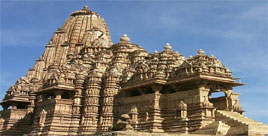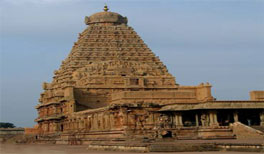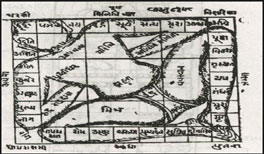Ashok Sridhar is a NRIOL featured columnist. He pens "The Ashok Sridhar Column". To read about Ashok Sridhar, please click here.
India has, since ages, been a confluence point of many different schools of architecture. From the majestic Rajput forts to the sky-high south Indian temples and from the epitome of beauty Taj Mahal to the intricate cave temples of Ajanta and Ellora, the opulence of Indian architecture is mind-boggling. The South Indian temple architecture enjoys a unique position among the various architectural styles found in India and elsewhere.
While the ancient temples of north India were periodically and methodically razed by the invading armies of Mahmud of Ghazni, Muhammad of Ghor and the like, many temples of south India, especially those in Tamil Nadu, have managed to survive due to their relatively favourable geographic location, far away from the invasion-prone northern India. Though Hinduism has long been followed all over India, different schools of temple architecture came into being, resulting in vastly different temple layouts and appearances. Needless to say, the rituals, prayers and offerings vary vastly as well. 'Vaastu Shastra', the ancient Hindu texts on architecture, divides the temple architecture into three types: 'Nagara' or northern style, 'Dravida' or southern style, and 'Vesara' or hybrid style. The hybrid style can be seen in the areas in and around the Deccan plateau that occupies a huge chunk of peninsular India.
In the Nagara style temples, the tower is beehive shaped. Such a tower is called 'Shikara', the plan (top view) of which is based on a square. The 'Shikara' directly over the 'Garbha Griha' (Sanctum Sanctorum) is, in general, the tallest. The picture (source: Paul Mannix, www.flickr.com) below is a snapshot of one of the temples in Khajuraho in central India:
The evolution of the temple as we know it began during the Gupta age. This age popularly known as the 'Golden Age' of India, peaked around 400 AD. The surviving examples from this age like the one near Jabalpur in central India contain an inner Garba Griha surrounded by an ambulatory path, an outer portico with columns in the front, and a flat roof made of stone. These represent the fundamental elements of the Hindu temple architecture; the flat roof was soon replaced by the more decorative and impressive Vimanam or Shikara though.
Another similar architectural form evolved in the south of India almost contemporaneous to the Gupta architecture: the Chalukya dynasty, with its capital at Aihole situated in what is now Karnataka, built many temples with mostly flat roofs. The efforts of this dynasty gave rise to an important feature of the Hindu temple architecture: the inclusion of 'Mandapa' or pillared hall in front of the temple.
From these early initiatives, the Hindu temple architecture evolved rapidly and differently, depending on the geographic locations. As mentioned before, the southern style, the northern style and the hybrid styles came into being. Henceforth, only the Dravida style i.e., the south Indian temple architecture will be discussed in detail.
The south Indian Hindu temple architecture, much akin to other forms of Indian temple architecture, has been, for more than a millennium, regulated by precise texts known as Vaastu Shastra. The Vaastu Shastra decrees that God's abode must be perfect. Hence, these temples are composed of repeating units of square, symbolising symmetry and permanence. A humanistic façade was given to the square, by showing it to be able to accommodate a human figure in a yogic posture, shown in the figure (source: www.sanathanadharma.com) below. Remarkably, this idea of using a human figure to represent a system of proportion predates the popular 'Vitruvian man', drawn by Leonardo da Vinci during the European Renaissance, by many centuries. It was by manipulating this basic shape that the Indian architects crafted some of the most magnificent structures the world has seen.
Some of the best examples of massive Hindu temples came into being as a result of the building spree of the Chola kings. The Brihadeeswara temple is the crowning glory that remains in a healthy state even after 1000 years of its construction. This is staggering indeed, considering the fact that the cupola of the Vimanam comprises two huge, sculpted granite blocks weighing 40 tonnes each!
The stability of the structure can be attributed to the pyramidal structure, which has proved to be more robust than its counterparts from north India with their complex curvilinear profiles. The engineering skills and the expertise that made the mounting of these huge stones atop a structure that is nearly 200 feet high must have been way ahead of their times. Another fine example of the Chola temple architecture is the temple in Gangaikondacholapuram, which succeeded Tanjore as the capital of the Chola Empire. The Vimanam of this temple, in contrast to the rigid pyramidal structure of the Brihadeeswara temple, rises up in a concave manner with fluid lines.
The Gopurams of the south Indian Hindu temples emphasized the importance of the temple within the ancient city. They had to be towering and massive. They differed from the Vimanam in that they need not necessarily be square-based. This could be due to the fact that the gateways needed to be dynamic, as opposed to the square-based Vimanam that needed to be static, signifying calm and permanence. As time went by, the temples were designed as a series of courtyards. The spaces around the shrine became hierarchical; the further the space is from the main shrine, the lesser its importance became. The outermost ring had buildings of a more practical nature - shops, kitchen, dormitories etc., thus ushering the temple from being purely a place of worship to being the hub of the ancient city. The grand Meenakshi temple in Madurai is probably the best example of this development implemented by the Pandya kings, who replaced the Chola kings for good. It was during this period that the building of a temple became a town-planning exercise rather than an architectural challenge.
Though the evolution of the Dravida temple architecture stalled briefly after the demise of the Pandya Empire, the architectural expression of devotion scaled new heights during the reign of the Vijayanagara kings. The grand temples built by them during the 15th and 16th centuries AD were subsequently left in ruins by later invasions. But from these ruins, especially those in Hampi, the capital of this empire, one can still fathom the magnificence of Vijayanagara architecture.
After a period of lull during the British rule, a new height, literally and metaphorically, was scaled when the tallest Gopuram in the world, that of Srirangam temple near Trichy was completed in 1987.
REFERENCES:
For a listing of past columns by Ashok Sridhar, please click here.




